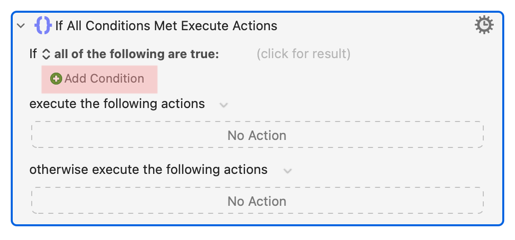I was referring to the "Automation" section of the app, which is a much simpler one. I am not that familiar with the shortcuts section as I never used it, it's an interesting one. From what I can see, it packs all conditions under "scripting", but then if I pick "all actions" I cannot find them. A bit confusing…
Anyway if you look at some of the examples in the link that I've shared, and in the screenshot above, you'll see that there's a bespoke call to action to create a condition, and I think that's a better approach. I don't have a problem with how KM represents actions and conditions in the same space after they are selected, I have a problem with them not being clearly differentiated from one another in the actions picker, because as I said, logically they are quite distinct. And in fact I did not notice them until you pointed out that they are available… which is the proof of what I am saying. A better approach would be to have an "Add condition" button next to "Add action", which is what the wiki page that you've pointed to seems to suggests, when it says "Add a new condition by clicking the green + button beside New Condition to select from a list of available conditions" — except I cannot locate any green button, so I am not sure what they meant by that.




